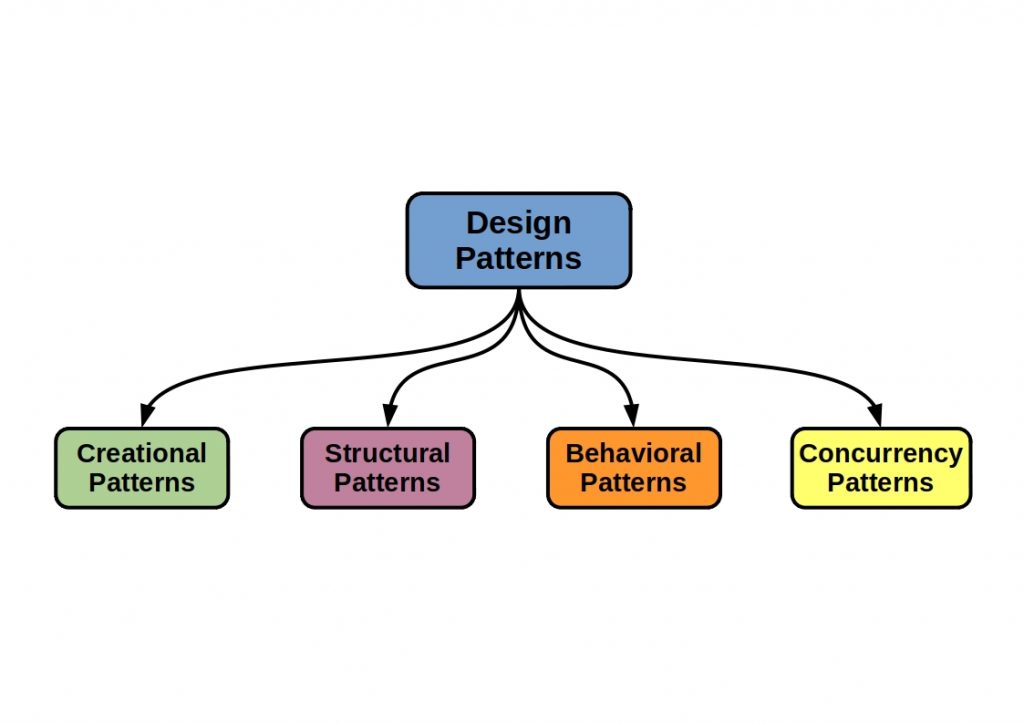Software design patterns have sparked a lot of debate among peers. Simply jolt a question on a tech website if you want to have the same experience. For example, a Reddit post received over fifteen comments, all of which said the same thing: software design patterns aren’t about rigidity!
Refactoring your software design pattern will assist you in being more creative with your products. However, if you want to hit the pinnacle, that is the best design patterns to learn? When it comes to having a career at a company like Google or Facebook, there are just a few software design patterns to brush upon.
But, before we get into the various patterns, let’s define what a design pattern is.
Why Are Used in software design patterns?
In recent years, Design Patterns have sparked some debate in the programming community, primarily due to their alleged “overuse,” which has resulted in code that is more difficult to learn and handle. It’s critical to remember that Design Patterns were never intended to be thrown together as haphazard, “one-size-fits-all” solutions for your code. In software engineering, there is no substitution for true problem-solving skills.
Design Patterns, on the other hand, can be very helpful when used in the right circumstances and for the right purposes. When used wisely, they can help a programmer become even more effective by helping them to avoid reinventing the wheel and still use techniques that have already been perfected by others.
They have a useful shared language for addressing and handling code in broader teams, and for conceptualizing repeated challenges and solutions. However, it is critical to ensure that the developer understands the how and why of each pattern. Without further ado, here are the following:
What is the purpose of a Design Pattern?
If you’re a software developer looking to improve your skills by learning new software design patterns, the first thing you can care about is versatility. A design pattern should be able to give the software some versatility. The importance of characteristics is the concept behind versatility.
The features you envisioned earlier will change over time, and you’ll need to make adjustments to add new functionality. A software design pattern will assist you in making additional modifications in this situation.
So, let’s take a look at the top seven software design patterns you should know.
Most Important Software Design Patterns
1. Singleton pattern
The singleton pattern is used to restrict the number of objects that can be created by a class. When only one (and only one) object is required to organize behavior around the system, this is advantageous. Caches, thread pools, and registries are also instances of places where only one instance of a class can occur.
It’s simple to construct a class object, but how can we guarantee that only one object is ever created? The solution is to make the constructor of the class we want to describe as a singleton ‘private.’ Only members of the class can use the private constructor in this manner, and no one else can. A singleton can be subclassed by having the constructor secure rather than secret. In certain cases, this may be appropriate.
In these cases, one solution is to construct a registry of subclass singletons, and the getInstance method will take in a parameter or return the desired singleton using an environment variable. The register then keeps track of string names that correspond to singleton objects that can be accessed if appropriate.
2. Method of the Factory
A traditional factory makes goods; a software factory makes items. Not only that, but it does so without requiring the class of the object to be generated to be specified. Objects are generated by calling a factory method rather than a constructor to do this.
The issue with this approach is that code that uses SomeClass’s object becomes suddenly reliant on the concrete implementation of SomeClass. There’s nothing wrong with using new to build artifacts, but it does come with the drawback of tying our code to the concrete implementation class, which can be troublesome at times.
3. Plan of action
The technique pattern allows for the abstraction of similar algorithms, allowing for the replacement of one algorithm or regulation with another without changing the client. Rather than implementing a particular algorithm directly, the code is given runtime instructions that tell it which of the group of algorithms to run.
4. Observant pattern
This pattern is a one-to-many dependence between objects that notifies all of its dependents when one object changes state. This is usually accomplished by invoking one of their processes. Consider what happens when you imitate someone on Twitter for the sake of convenience. You’re simply requesting that Twitter give you (the observer) tweet notifications from the individual (the subject) you’ve chosen to follow.
The viewer who is involved in the updates and the subject who produces the updates are the two players in the pattern.
A one-to-many relationship exists between a subject and many observers. An analyst, on the other hand, has the option of subscribing to information on other topics. You can subscribe to a news feed from a Facebook website, which will be the focus, and the subscriber would be notified if the page has a new article.
In the case of a large number of subjects with few observers, holding each subject’s observers separately will increase storage costs because certain subjects will store the same observer several times.
5. Builder Pattern
A builder pattern is used to create objects, as the name suggests. Objects we make can be complicated, consisting of many sub-objects, or requiring a lengthy development process. The builder pattern will make the process of making complex forms easier. A builder typically creates a composite or aggregate piece. The builder pattern can seem identical to the abstract factory pattern, except the builder pattern generates an object one move at a time, while the abstract factory pattern returns the object all at once.
6. The Adapter
By translating one class’s interface into another, incompatible classes will operate together. Consider it a translator: when two heads of state who do not speak the same language meet, an interpreter sits between them and translates the dialogue, allowing contact to take place. If you have two programs, one that outputs XML and the other that requires JSON input, you’ll need an adapter to make them fit together smoothly.
7. Economy Pattern
The state pattern captures the different states that a system may be in and causes an entity to modify its behavior as its internal state changes. The machine, or context, as it is referred to in pattern-speak, may be subjected to acts that catapult it into various states. The coding becomes inflexible and riddled with if-else conditionals if the pattern isn’t used.
Do you want to continue learning about design patterns?
You’ll be able to do more than just read the philosophy of Software Design Patterns: Best Practices for Developers. With real-life programming samples, you’ll be able to dig straight into real-world challenges and appreciate realistic solutions.

The course is based on the Gang of Four’s famous novel, but it’s framed in an immersive, easy-to-understand style. You’ll discover the proper implementations of the three main design pattern forms (creational, structural, and behavioral) and how to integrate these design patterns into your own projects by interactively mastering the 23 popular design patterns from the book.

